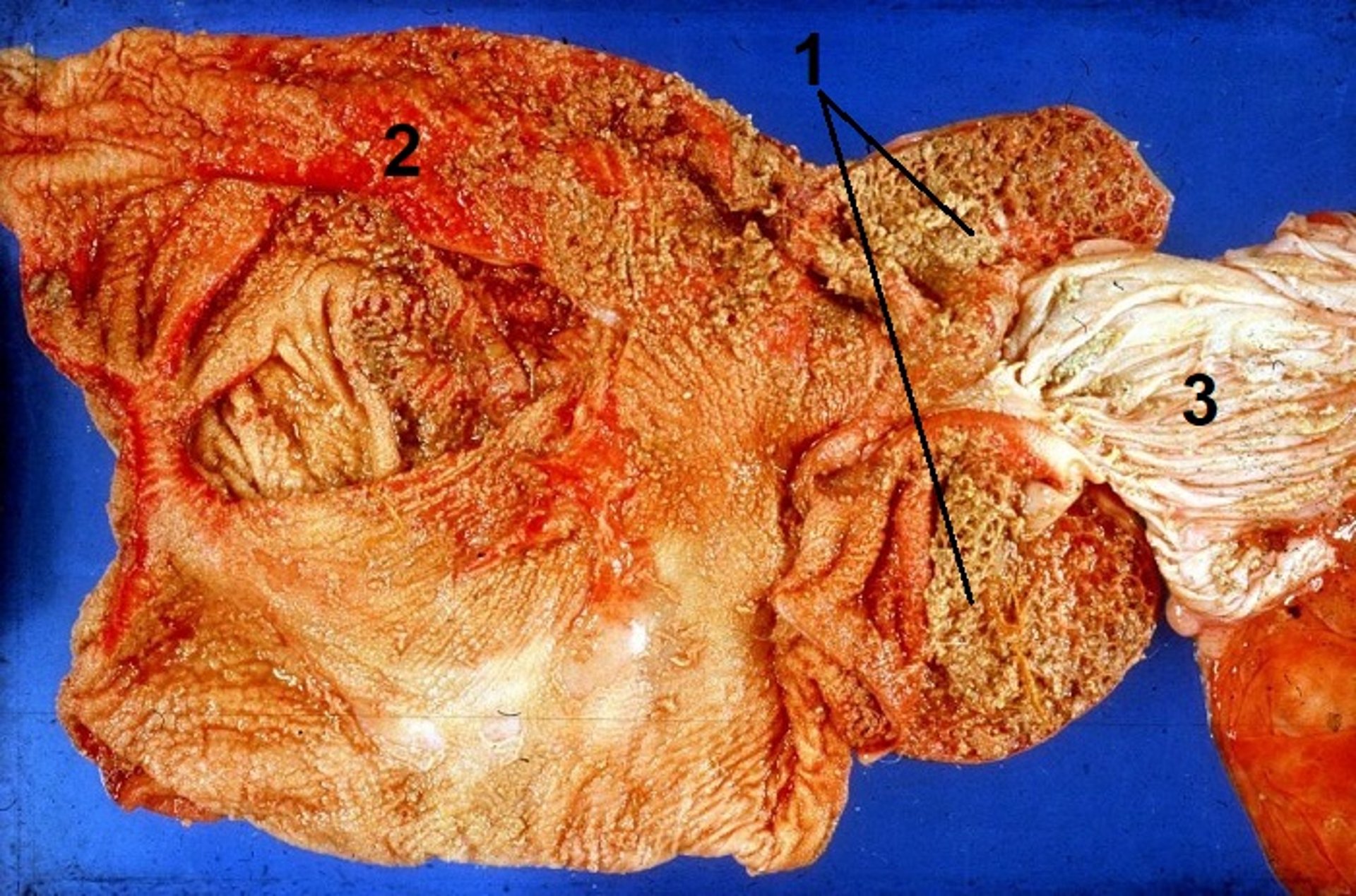Courtesy of Dr. Ingrid Lorenz.
Courtesy of Dr. Ingrid Lorenz.
Reticuloruminal milk accumulation ("ruminal drinking") is a condition in which milk is ingested straight into the rumen because of a failure of the reticular groove reflex, resulting in ruminal acidosis in calves on a liquid diet. The disorder presents as primary chronic disease (ruminal drinking syndrome) in veal calves, and in its acute form as a complication secondary to different neonatal diseases, most commonly neonatal diarrhea. It has also been described in artificially fed lambs.
The reticular groove is a muscular structure extending from the cardia to the reticulo-omasal orifice. Its correct closure is a precondition for the direct passage of ingested milk or milk replacer into the abomasum. When the reticular groove partially or completely fails to close, milk spills into the reticulorumen and is fermented to short-chain fatty acids or lactic acid. The subsequent drop in the pH of the ruminal contents (occasionally to a pH < 4) leads to variable extents of inflammation of the mucosa of the forestomachs and the abomasum. In chronic cases, hyperkeratosis or parakeratosis of the ruminal mucosa can lead to impairment of ruminal motility with chronic or recurrent tympany. In addition, atrophy of the intestinal villi and a decrease in brush border enzyme activity with maldigestion and malabsorption have been observed.
Systemic consequences of acute ruminal drinking are due mainly to absorption of organic acids from the digestive tract. In particular, the l- and d-isomers of lactic acid may lead to metabolic acidosis, with the accumulation of d-lactate, because of the absence of a specific enzyme for its metabolism in mammals. This accumulation of d-lactate has been found to be responsible for clinical signs such as lethargy, ataxia, and general weakness.
Primary dysfunction of the reticular groove occurs as a result of stressful situations (eg, prolonged transport, grouping, or change in feeding techniques), especially in bucket-fed veal calves. Clinical signs usually appear some weeks after the arrival of the calves at the fattening units and are characterized by inappetence, lethargy, poor growth, hair loss, recurrent tympany, ventral abdominal distention, and passing of claylike feces. Fluid-splashing sounds can be heard on succussion of the left flank. Recovery of fermented ruminal contents via stomach tube is diagnostic. In these advanced, chronic cases, the prognosis is poor. If the disease is detected early enough, feeding small volumes of milk from a nipple bottle or a bucket may be successful. In addition, closure of the reticular groove can be triggered by allowing the calf to suck a finger before the milk feed is offered.
Acute ruminal acidosis secondary to other disorders occurs most commonly in calves with neonatal diarrhea; however, it occurs also in other painful or weakening diseases. In these cases, the clinical picture is usually dominated by the underlying disease. In cases of severe rumenitis, calves may exhibit teeth grinding, arching of the back, and slight abdominal distention. Force-feeding of inappetent or primarily anorectic calves can also cause ruminal acidosis or worsen the situation by providing substrate for further fermentation.
The prognosis for secondary reticuloruminal milk accumulation depends mainly on the success of treatment of the underlying disease. Calves with metabolic acidosis and dehydration due to neonatal diarrhea usually recover spontaneously from reticuloruminal milk accumulation after adequate treatment, and the condition will generally remain unrecognized. In calves that have been force-fed or that do not respond to treatment as expected, reticuloruminal milk accumulation should be considered and the ruminal fluid examined. Removal of the contents and lavage with warm water via stomach tube may be beneficial, especially after prolonged force-feeding. Prophylaxis against reticuloruminal milk accumulation consists of early treatment of diseased calves, adequate feeding techniques, and the minimizing of stress in purchased calves.




